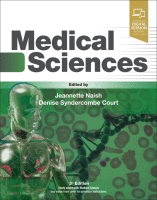Physical Address
304 North Cardinal St.
Dorchester Center, MA 02124

Introduction In 2003, the Director General of the World Health Organization (WHO) unequivocally stated that ‘proper nutrition and health are fundamental human rights’. Good nutrition underpins human health in the sense that it influences growth, physical and intellectual development and…

Introduction The chemical composition of food is complex and little of it is water soluble; therefore, it cannot enter the body fluids unaltered. A series of digestive processes enables food to be broken down and absorbed. These processes take place…

Introduction The kidney is an essential organ for life and plays a central role in homeostasis. Homeostasis, originally defined by the great French physiologist Claude Bernard, refers to the stability and maintenance of the internal environment of the body –…

Introduction The primary function of the respiratory system is to move air into the lungs to supply oxygen for the metabolic processes of the body whilst removing sufficient carbon dioxide to maintain the acid–base balance of the blood. Breathing involves…

The Haemopoietic System Blood and its constituents Blood is one of the body's largest tissues, comprising a mixture of cells within a fluid (plasma). Blood permeates all organs and tissues, distributing essential organic and inorganic substances. It maintains homeostasis and…

Introduction The cardiovascular system is a network for blood distribution which functions to supply the cells of the body with oxygen and nutrients such as glucose and amino acids; to provide homeostatic control of acid–base balance, fluid balance and thermoregulation;…

Introduction The human body is an astonishingly well-coordinated organism. Made up of several billion cells, the body depends on communication systems that are precisely regulated and that reach every one of those cells. There are two main communication systems in…

Introduction The musculoskeletal system is composed of the skeleton, the muscles and accessory tissues, which together allow movement of the body. The bones of the skeleton are living tissue, and they can be found in a variety of shapes and…

Introduction The nervous system detects details about the external and internal environments, processes them, determines behaviour and controls body activities. Sensory information is carried to the brain from specialised receptors in the skin, muscles and joints; from special sense organs…

Introduction The term epidemiology has its roots in Greek words meaning, very roughly, ‘a discourse about something visited on the people’. Whilst it is clearly a close cousin of ‘epidemic’, it is important to understand how the two relate to…